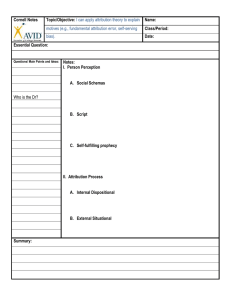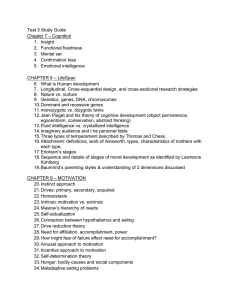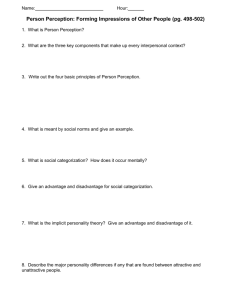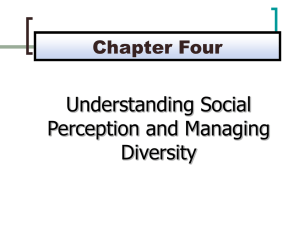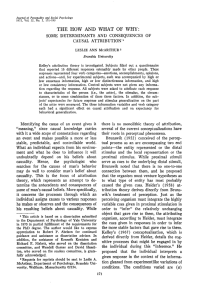Attribution
advertisement
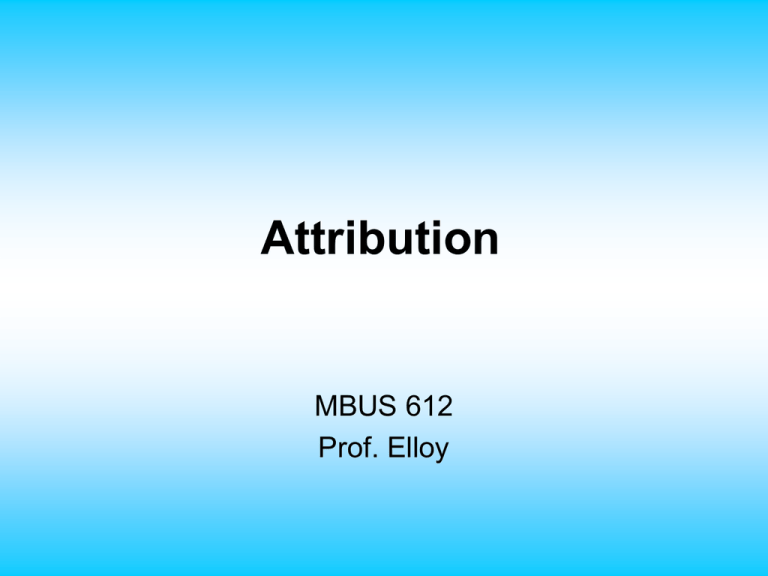
Attribution MBUS 612 Prof. Elloy Attribution Theory • Consensus involves comparison of an individual's behavior with that of his or her peers. • Distinctiveness is determined by comparing a person's behavior on one task with his/her behavior on other tasks. • Consistency is determined by judging if the individual's performance on a given task is consistent over time. Attribution Cues • Consistency Cues: Does the person engage in the behavior regularly and consistently? • Consensus Cues: Do most people engage in the behavior, or is it unique to this person? • Distinctive Cues: Does the person engage in the behavior in many situation -- or is it distinctive to one situation? Attributional Biases • Fundamental attribution error • Actor-observer effect • Self-serving attribution Kelly’s Model of Attribution • Basic Premise: An attribution is based on the consensus, distinctiveness, and consistency of the observed behavior. • Consensus: - Involves comparing an individual's behavior with that of his or her peers. - High consistency indicates an individual is different from peers. • Distinctiveness: - Involves comparing a person's behavior or accomplishments on one task with the behavior or accomplishments from other tasks - Highly distinctive behavior or results represents a situation where the current behavior or result is significantly different from typical behavior or results on other tasks. Kelly’s Model of Attribution (cont.) • Consistency: - Involves comparing a person's behavior or accomplishments on a given task over time. - High consistency implies that a person performs a certain task the same, time after time. • Predictions: - Internal or personal attributions are made when a behavior is associated with low consensus and distinctiveness, and high consistency. - External or environmental attributions are made when a behavior is related with high consensus and distinctiveness, and low consistency. Internal vs. External Attribution • Internal Attribution: assigns the cause of behavior to some characteristic of the person – Ability – Personality – Motivation • External Attribution: assigns the cause of behavior to factors external to the person – Task Difficulty – Luck Pygmalion Effect Peoples' expectations and beliefs determine their behaviors and performance; thus, serving to make their expectations come true. Model an Example of Attribution Process • Casual Attributions: Suspected or inferred causes of someone's behavior. • General Model of Attribution Process: Antecedent People consider the A behavior antecedents of the is observed behavior: Why did the behavior occur? Attribution People determine the causes of behavior: This represents an attribution. Consequence Attributions affect our subsequent expectations about people.
